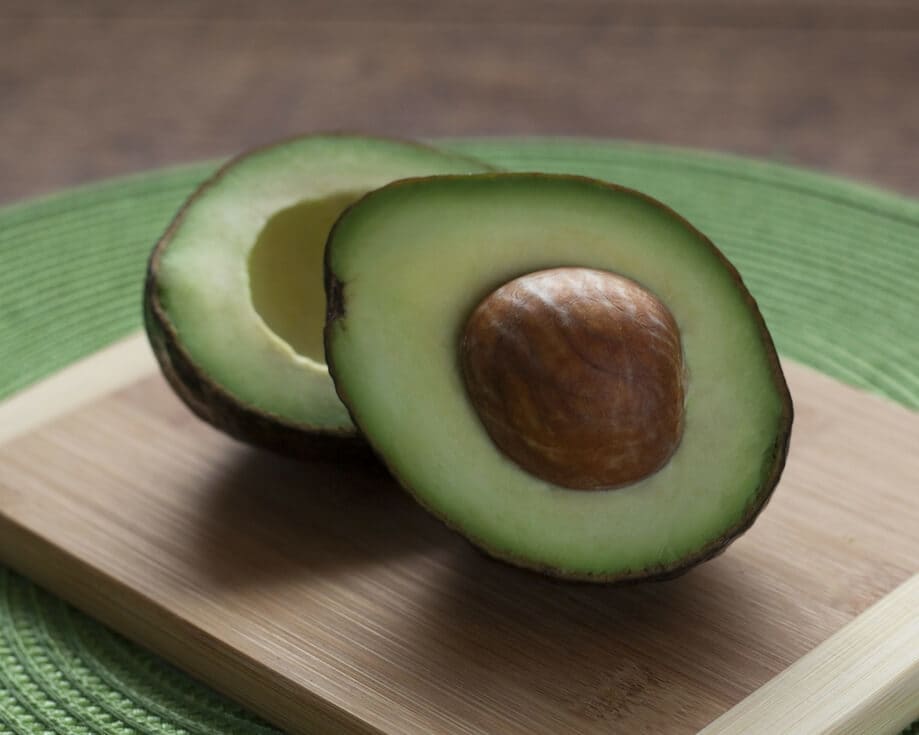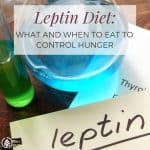Want to be a fat-burning machine without having to count calories? Here’s a few ideas on how to get into ketosis faster on a low carb diet.

Do you want to look leaner for bikini season? Yoga pants starting to feel a little tighter? One way to burn fat fast is to go on a ketogenic diet.
The physiological process of burning stored fat instead of sugar, can be achieved within a short amount of time after following a strict keto diet.
It is possible to get there in a day. In fact, some people show you how to get into ketosis, this fat burning state, in 24 hours.
Do you need to fast?
Becoming keto adapted where the body burns fat rather than sugar isn’t as hard as you might think. And, you don’t have to starve yourself to get there quickly.
The great news for those who want to know how to get into ketosis faster is, well … you don’t have to fast.
Fasting has been used for thousands of years by virtually every religion and traditional society.
There are some people who think that a complete fast (not just intermittent fasting) is a way to get into ketosis faster.
But the great thing about following a ketogenic diet is that you can eat until your heart—er, stomach—is content.
You just have to eat enough of the right foods. And, of course, eat very little of the wrong foods.
Is getting into ketosis safe without a doctor?
Before reviewing how to get into ketosis quickly, let’s take a look at a quick background:
The ketogenic diet was designed as an anti-seizure protocol in 1924 by Dr. Russell Wilder at the Mayo Clinic, according to The Charlie Foundation.
The Charlie Foundation is a nonprofit which provides information about different ketogenic diet therapies for people with epilepsy, other neurological disorders and select cancers.
The ketogenic diet is still used to prevent neurological disorders. Classic ketogenic diets are medically-supervised.
But many people without neurological disorders have followed some version of it in order to lose weight, especially body fat.
The way to get into ketosis quickly, in a nutshell, is the same whether you’re under the supervision of a dietician or doing it on your own: drastically cut down on carbohydrates.
When your body is using ketones for energy, your body has become keto adapted where stored fat is burned instead of sugar.
Ketones come from fatty acids that are made in the liver. They are used for energy during periods of fasting.

Get into ketosis fast by limiting carbs to 25 grams
But if you want to learn how to get into ketosis faster, it’s not difficult. And, there’s no need to avoid food altogether.
The body becomes keto adapted when carbohydrates are limited to very low levels.
In fact, if you reduce your carb intake to about 25 grams daily, you can quickly get into ketosis. (Roughly speaking and some can use a net gram value instead which is total carbs minus grams of fiber.)
Your average serving of pasta contains 25 grams of carbohydrates. And most people typically have more than one serving.
Adding in some bread, oatmeal, muffins, fruit, potatoes, and the carb count of the meal is now well over 100 grams.
But learning how to get into ketosis fast doesn’t mean you have to give up your favorite foods.
You just have to give up carbs and eat more of the foods that will help your body start burning fat stores instead of sugar.
When you become keto adapted, your liver converts the stored fat in your cells into ketones.
And, although some people think the brain’s preferred fuel source is carbs, your brain can in fact be fueled by ketones.
If you’re disciplined enough to eliminate nearly all starchy forms of carbs, it will be easier for you to get into ketosis fast.
Here’s the good news about following a ketogenic diet: when you use fat for energy, instead of stored sugar (glycogen), you burn more calories. That’s because using fat for fuel takes more energy.
There are nine calories in one gram of dietary fat. There are only four calories in one gram of carbohydrate.
Therefore, dietary fat is more than twice as energy dense as carbs.
Is getting into ketosis natural?
If natural fat has twice the energy and can actually help you lose weight (even though this macronutrient is called “fat”, it can help you lose fat), then why isn’t this the main way people eat?
For much of human history, people ate, roughly speaking, a ketogenic diet.
Our ancestors ate a much lower-carb diet (compared to today) up until approximately 10,000 years ago, with the advent of the agricultural revolution.
The agricultural revolution heralded the end of the hunter-gatherer diet, ushering in the first higher-carb trend.
And ever since fats were mistakenly blamed for heart disease in the mid-20th century, high carb diets are the norm.
Some advocates of the ketogenic diet believe that this low-carb diet is the way humans were meant to eat.
It’s important to keep in mind that the modern ketogenic diet was intended for medical use.
And organizations such as the Charlie Foundation adhere strictly to medically-supervised diets that cause the body to produce ketones.
With that disclaimer out of the way, let’s dive into how to induce a ketogenic state where fat storage is burned quickly for energy.
There are a lot of keto support groups online that can help you stay low-carb so you can get into ketosis faster on your own.
How to induce ketosis, fast
To get a ketogenic state quickly, possibly within 24 hours, you’ll want your main source of fuel to be smart dietary fats. These healthy fats can be found in whole foods such as eggs and avocado.
The best way to get into ketosis is to minimize carbs and consume adequate protein.
Theoretically, excess protein can be converted into glycogen (a process called gluconeogenesis) so you don’t want to go overboard.
If excessive amounts of protein are consumed, it’s possible that your body can use it for fuel instead of ketones.
Protein such as beef, chicken, turkey, etc., can raise insulin levels, which prevents ketosis from kicking in.
How much protein is too much?
The recommended protein intake is approximately two-thirds to nine-tenths of a gram of protein per pound of body weight.
So if you weight 150 pounds, the daily range would be somewhere between 100 and 135 grams.
Your body really doesn’t need to eat more than a few ounces of protein in one sitting. That’s about the size of your fist.
A hearty piece of wild salmon covering your entire fist will be more than enough to keep your muscles, hair, nails and skin strong.

How to get into ketosis in one day
If you really want to enter a ketogenic state within one day, try to limit your intake of carbs to 25 grams.
The carbs you eat should come only from low-starch green, leafy veggies and just a little bit of fruit. The good news about these carbs is they are the healthiest carbs to eat.
When learning how to get into ketosis fast, some may think it’s harder than it is. Going a day eating just 25 grams of carbs at most isn’t as difficult as it sounds.
You can have a couple of whole eggs, grass-fed butter, bacon and a cup of steamed spinach. This meal contains less than three grams of carbs.
Although allowed in small quantities, fructose (fruit sugar) can knock you out of ketosis so eat fruit with caution.
You may want to wait until after you are in a ketogenic state to see if you are sensitive to fruit sugar.
For lunch, you can have some steamed broccoli with wild salmon. Instead of having rice or another starch, you can try shirataki noodles recipes, which contain close to zero carbs.
Half a cup of broccoli contains just 3 grams of carbs. So far, we are at less than 7 grams of carbs!
And for dinner, try eating another lean, organic serving of meat with a salad. Use olive oil or avocado oil for the dressing.
Some people are very sensitive to carbs and find that they do best eating mainly fats with moderate protein.
The egg fast and fat fast are two very efficient ways of getting into ketosis within a day.
One of the most enjoyable things about being keto adapted is that you don’t have to count calories. You’ll love that part because you won’t have to worry about having an app to keep track.
But how do you know you’re in ketosis?
There are test strips you can buy. But they may not be accurate. Test strips measure the ketones as expressed through your urine.
Your body, theoretically, could be burning ketones before a urinary test confirms your ketogenic state.
Exercise can burn ketones. A test strip isn’t going to take this into account. Also, drinking water can flush out ketones.
Another way to get into ketosis fast is to try intermittent fasting. That’s when you take 2-3 days during the week and limit your calorie intake to 500.
If you don’t like counting calories or just really enjoy eating food, don’t worry about intermittent fasting.
But intermittent fasting is a good way to kick-start fat burning through a keto diet.
While a true intermittent fast does restrict calories, there’s another important component to it that might help you get into ketosis faster. And that’s going about 16 hours or so without eating.
Whether or not you want to take a day to reduce calories to approximately 500, try this….
Finish eating dinner by 6 or 7 p.m. Then, don’t eat breakfast until 10 a.m. This may help kick-start ketosis.
And if you want to speed things up faster, try doing exercise. But don’t exercise too hard if you’re not in exceptional shape.
High-intensity exercise is a form of stress that can increase cortisol production.
Cortisol can interfere with fat-burning. Try getting outside for a nice long walk instead of doing a challenging spin class.
If you’re feeling hungry, eat! Remember, calorie intake doesn’t matter.
What does matter is eating most of your calories from fat, a little from protein and a tiny bit from carbs.
Eat as much smart fats as you want. Sprinkle in some nuts, seeds, and grass-fed cheese for snacks to curb hunger.
How long does it take for ketosis to kick in?

For those that want to know how to get into ketosis faster, the method depends on the individual. If you’re active and keep your carbs super low (approximately 25 grams) you should be able to get there quickly.
Each person has a unique biochemistry. Your body functions differently from everybody else. You might be able to get into ketosis within 24 hours.
Somebody else, though, might need several days.
If you’re already very active and are able to keep carbs ultra low, it’s possible that you can reach a ketogenic state in a day.
The key, though, whether it takes one day or a week is to keep protein as well as carbs low.
This is the big challenge for many people. It’s especially crucial to keep protein low if you’re going to eat a ketogenic-inspired diet for the long run.
Eating too much protein can not only interfere with ketone burning, it can also strain your kidneys.





